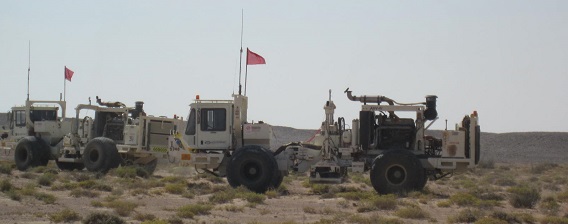Oil and natural gas are found in sedimentary rocks at depths of less than 10 kilometres. These rocks have been deposited through particles, carried by air or by water and then buried and cemented into rocks. In order to locate geological structures that are advantageous for oil and natural gas accumulations, different types of tests are conducted, of which the most common is geophysical seismic. The principal behind seismic is that sound waves are transported at different speed in different materials and that the sound waves, at the transition between different materials, partly bend and reflect back to the surface. Since rocks have different compositions, it is possible based on variations in the speed of the sound wave and angle, to estimate the location of structures that could hold oil and/or natural gas reserves in an exploration area.
Seismic is acquired onshore or offshore by geophysical crews or seismic vessels, respectively. Single linear lines of seismic provide information about the subsurface rocks directly beneath the seismic equipment. This type of seismic data is referred to as two-dimensional or 2D seismic, because it provides data along two axes, length and depth. If seismic acquisition is done across multiple lines simultaneously, the third dimension of width is gained, hence referred to as three-dimensional seismic, or 3D seismic. 3D seismic offers much greater density of information about the subsurface but is much more costly and covers a smaller area.


